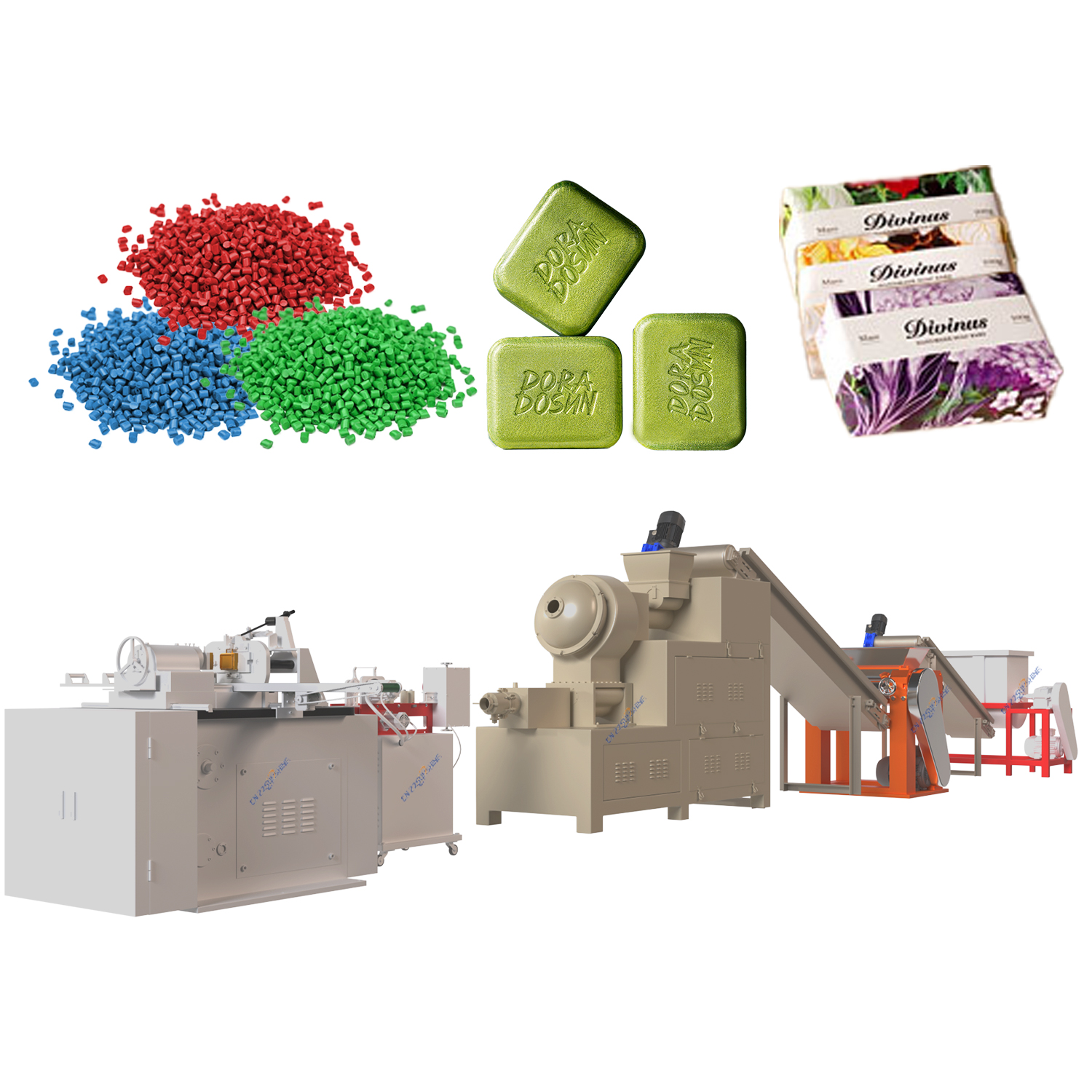In today’s competitive industrial landscape, a reliable soap making production line stands as the backbone for high-volume bar soap manufacturing, enabling businesses to meet rising global demand with precision and cost-effectiveness. This integrated system typically starts with a robust soap mixer, where raw materials like fats and alkalis blend uniformly under controlled conditions to form a homogeneous base, minimizing waste and ensuring consistent quality. Next, the vacuum plodder machine plays a critical role by compressing and extruding the soap mixture into dense, air-free logs, which is essential for creating durable bar soaps that resist cracking during use. For cutting, an electric washing soap cutter automates the slicing process into precise bars, significantly reducing labor costs and human error while maintaining hygiene standards—ideal for both laundry bar soap production lines and beauty soap making lines.
The advantages of adopting such an automated soap production line extend beyond basic efficiency. For instance, incorporating a custom soap cutting machine allows for tailored bar sizes and shapes, catering to niche markets like toilet soap finishing lines or bath soap making machines without retooling delays. Similarly, a well-designed laundry soap making line can boost output by up to 40%, leveraging energy-efficient components to lower operational expenses. Moreover, modern vacuum plodders and mixing machines enhance safety by minimizing manual handling of chemicals, a key factor in compliance with international standards.
Ultimately, investing in a comprehensive soap making production line not only accelerates time-to-market but also supports scalable growth, from small-scale beauty soap making lines to large industrial setups. By integrating advanced technologies like electric washing soap cutters and vacuum plodders, manufacturers achieve superior product consistency, reduce environmental impact, and unlock new revenue streams in a dynamic market.




